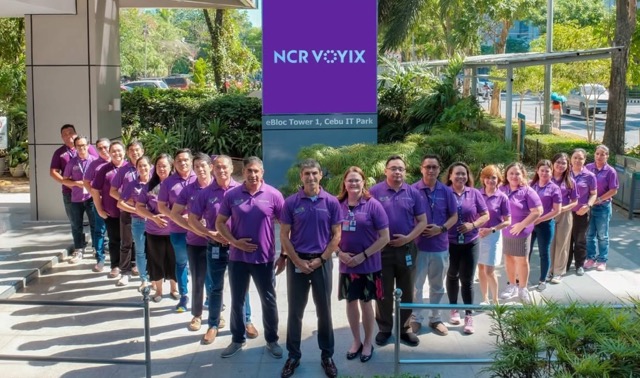
The Sales–Supply Disconnect: How to Turn It Into a Growth Engine
Bridging the gap between what you sell and deliver could be the biggest unlock for your company’s growth.
For many companies, the problem slowing revenue growth isn’t visible on a sales dashboard or in a marketing report. It’s not poor execution in the field or lack of customer demand. It’s a quieter, systemic issue that sits at the heart of your operations: a disconnect between sales and supply chain.
This misalignment, the gap between what the business wants to sell and what it’s actually able to deliver, quietly drains millions from the top line every year. But here’s the good news: closing that gap doesn’t just remove friction. It becomes one of the most potent growth engines your business can build.

The Disconnect That’s Costing You Millions
Across industries, sales and supply chain teams still operate in silos. They run on different data, different systems, and different assumptions. Sales is focused on winning deals.
Supply is focused on keeping operations running smoothly. Finance is left trying to reconcile the two. The results are predictable and costly.
- Sales commits to deals that the supply chain can’t fulfill.
- Customers receive late shipments or broken promises.
- Operations scramble to expedite orders.
- Deals slip, margins erode, and trust suffers.
According to Gartner, poor alignment between commercial and supply chain functions leads to a “lack of cohesive planning and forecasting,” directly contributing to missed revenue targets and customer churn.²
This isn’t just operational noise; it’s a strategic risk. And as revenue expectations climb, that misalignment becomes even more damaging.

From Silos to Synergy: A Leadership Imperative
The solution isn’t just about better tools or new processes; both matter. It starts with a shift in mindset at the leadership level.
Breaking down the sales–supply disconnect requires CROs, CIOs, and Sales Ops leaders to think differently about their roles. Revenue growth isn’t something sales drives and operations support. It’s something that happens when the two move as one.
"Sales Ops has always been the connective tissue; now it's becoming the central nervous system."
That means leadership must champion shared goals, data, and accountability. It means bringing supply chain visibility into commercial conversations and injecting real demand signals into operational planning. Most of all, it means shifting from reactive coordination to proactive orchestration.
What a Connected Revenue Engine Looks Like
When sales and supply are aligned, everything changes. Instead of working in parallel, teams work as an integrated system, informing each other in real time.
Here’s what that looks like in practice:
- Real-time demand signals inform supply decisions. Sales forecasts and pipeline data are continuously fed into planning systems, enabling more innovative capacity and inventory decisions.
- Supply constraints inform sales commitments. Sales teams know what’s feasible before deals close, improving promise accuracy and reducing missed dates.
- Finance gains accurate visibility. With one shared view of demand, supply, and revenue impact, finance can plan more accurately and confidently.
The result?
- Forecast accuracy improves.
- Promise dates become commitments, not guesses.
- Customer satisfaction rises.
- Revenue is no longer lost to misalignment — it accelerates.
Boston Consulting Group found that companies that digitally integrate sales and supply chain planning see up to 20% higher forecast accuracy and up to 15% better order fulfillment.³ That’s a direct line to faster growth.
How to Build Your Growth Engine
Turning the sales–supply disconnect into a growth engine isn’t about incremental tweaks; it’s about reimagining how these functions work together. Here are three pillars every organization should focus on:
1. Create a Unified Data Layer
Siloed data is the enemy of alignment. Unifying data from Salesforce, ERP, financial, and operational systems, ideally across a multi-cloud architecture, gives every team a single source of truth. With shared visibility, decisions improve across the board.
2. Transform S&OP into an Adaptive Process
Sales & Operations Planning doesn’t need to be a backward-looking meeting. With the right data and tools, it becomes a continuous, adaptive process that responds to real-time demand, supply, and capacity changes and shifts resources accordingly.
3. Harness the Power of AI
Agentic AI solutions like PolymatiQ™, ketteQ’s solver engine, take alignment to the next level. By running thousands of simulations across supply and demand scenarios, AI identifies trade-offs, reveals constraints, and helps teams choose the best possible course of action, not just the most likely.

Real-World Example: NCR Voyix
Consider NCR Voyix, a global leader in retail technology. Despite strong demand, their legacy planning system created constant misalignment between sales and supply. Deals slipped. Promise dates were missed. Customers grew frustrated.
In just five months, NCR Voyix replaced that system with ketteQ, connecting real-time sales and operational data across its global supply chain. The result was immediate: sales and supply chain teams began operating from the same playbook, promise accuracy improved, and revenue execution accelerated.
This isn’t an isolated story. Companies across industries, from manufacturing to distribution, are seeing similar results by closing the gap between sales and supply.

Conclusion: The Future Belongs to the Aligned
The companies that will win the next decade aren’t just the ones with the best products or the biggest sales teams. They’re the ones that align their commercial ambition with their operational reality and turn that alignment into a competitive weapon.
The sales–supply disconnect doesn’t have to be a barrier. With the right leadership, data, and technology, it becomes a growth engine that drives revenue, improves margins, and builds customer trust.
Download the White Paper to Go Deeper
This post is just one part of the story. In our new white paper What’s Really Preventing Revenue Growth (Hint: It’s Not What You Think), we look deeper at how companies are bridging the sales–supply divide and transforming revenue execution with Salesforce, multi-cloud architecture, and agentic AI.
Download the full white paper here to learn how CROs, CIOs, and Sales Ops leaders are unlocking growth by closing the gap between what’s promised and what’s possible.





